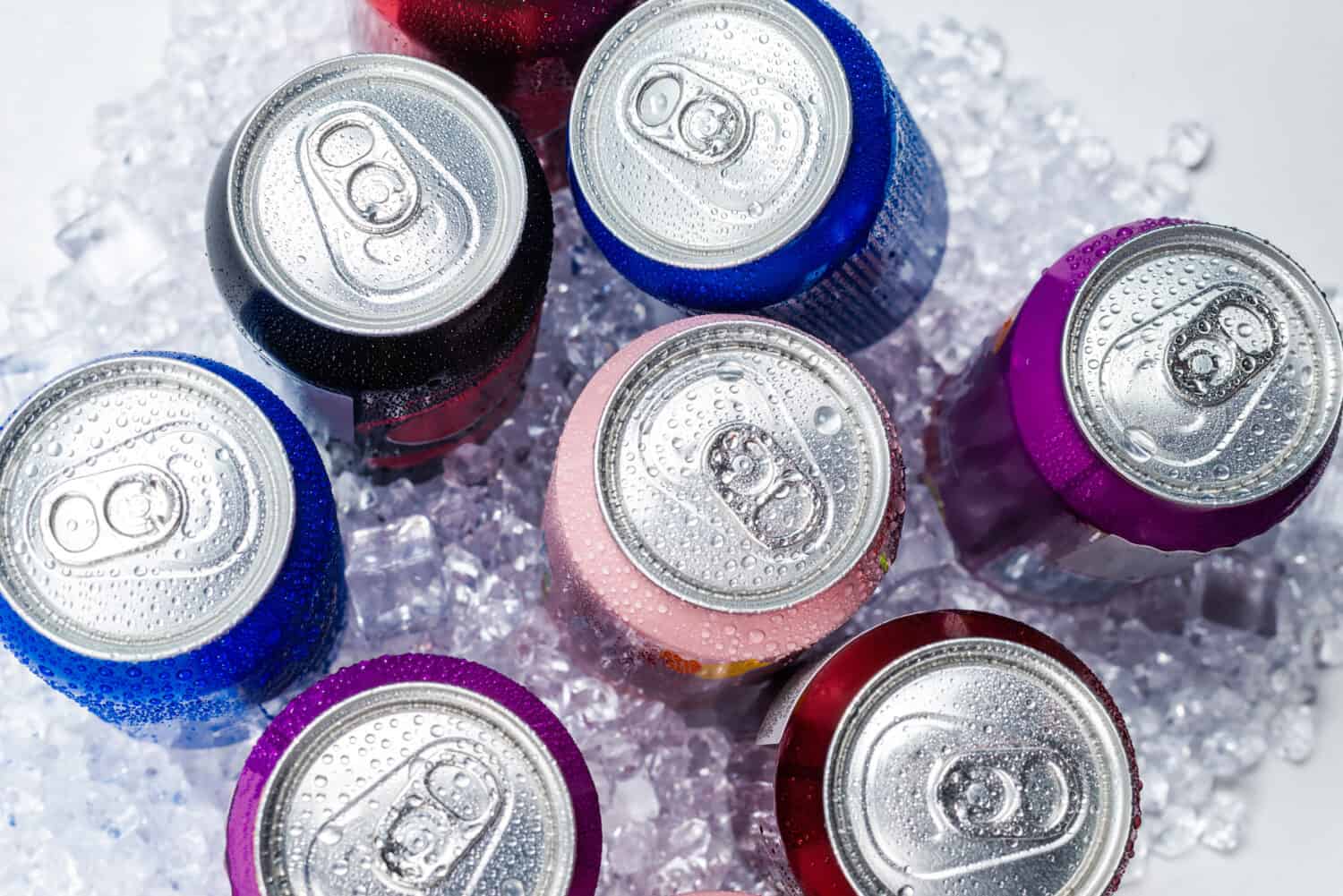While you’ve probably had an energy drink in your lifetime, you may not know how bad some of them can be. The most unhealthy energy drinks in America include some of the most well-known brands. Red Bull, Celcius, Monster, and Rockstar all have some monstrous levels of sugar and caffeine content. While you may be thinking that both those ingredients in moderation are totally fine, after all, we consume sugar and caffeine in all kinds of foods and drinks daily.
However, it’s the amount of added sugars and caffeine content that makes energy drinks so problematic. Increased sugar and caffeine in high doses can up your blood pressure and your heart rate. It can also lead to insomnia, and anxiety, and lead to the risk of heart disease and diabetic conditions.
Of course, we're not saying you can't enjoy any energy drinks. But hopefully, a look down this list will drive home that moderation is key when enjoying drinks with these levels of sugar and caffeine.
We’ll learn about the history of energy drinks, and how we got to the worst ones available today. Get to know the most unhealthy energy drinks in America, as well as what to drink instead. There are definitely some unhealthy options out there, but there are always healthier alternatives to know about. By the end of this, you’ll know exactly which brands to avoid, as well as what to look for. When you’re in desperate need of an energy drink to tide you over, reach for one of the good ones instead of the most unhealthy energy drinks in America. Let’s get into it.
The Most Unhealthy Energy Drinks In America
Now that you know some of the history of energy drinks, let's talk about the most unhealthy energy drinks in America. Which of these popular brands did you not expect to be included on this list?
1. Rockstar Energy
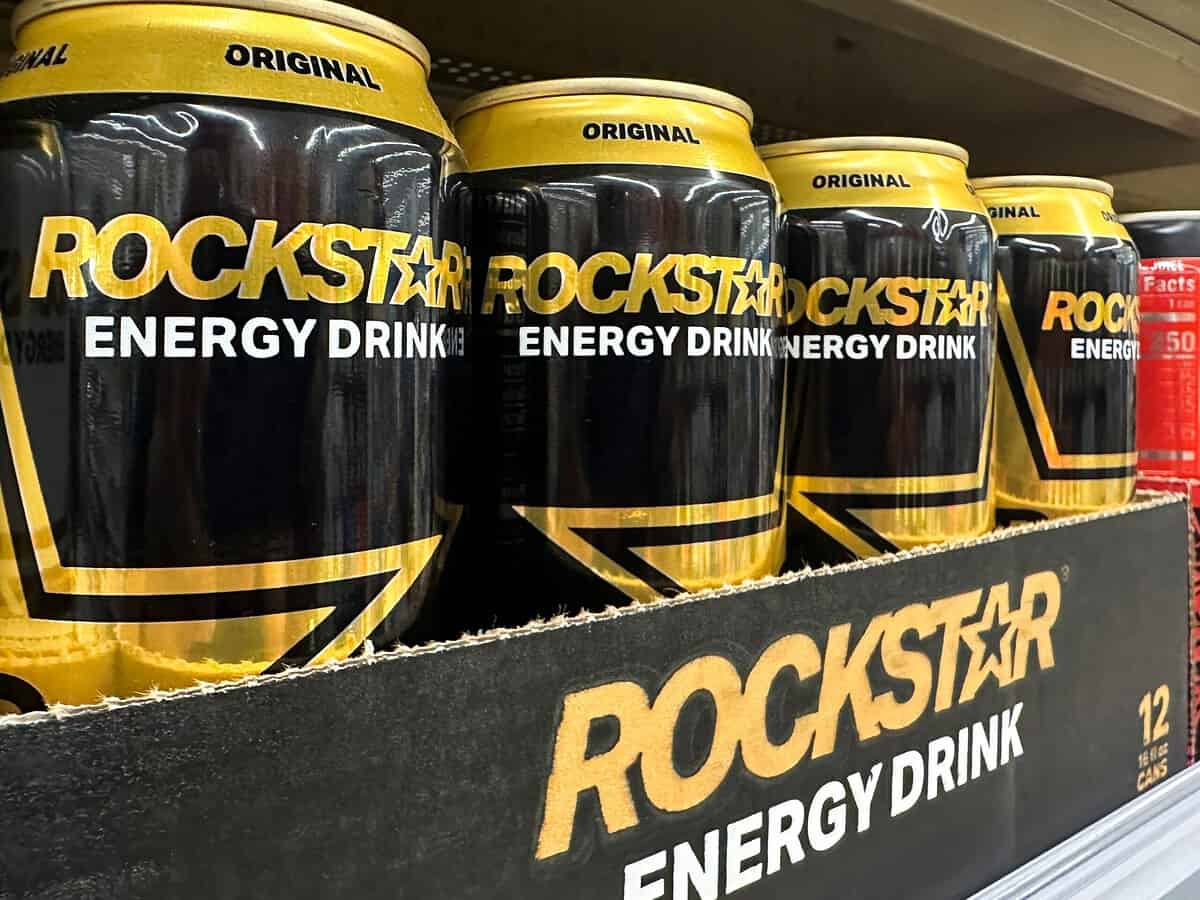
Rockstar Energy Drink cans
©MDV Edwards/Shutterstock.com
The Rockstar Energy drink has some 31 grams of sugar per serving, and twice that in their larger can size. According to the American Heart Association, the recommended daily sugar intake is a maximum of 36 grams of sugar for adult males and 25 grams for adult females. There are 100 mg of caffeine in one 250 ml can of Rockstar Original energy drink. While the recommended daily limit of caffeine is 400 mg, keep in mind the amount of sugar you'd be consuming to reach this quota with a Rockstar energy drink.
2. Reign Energy
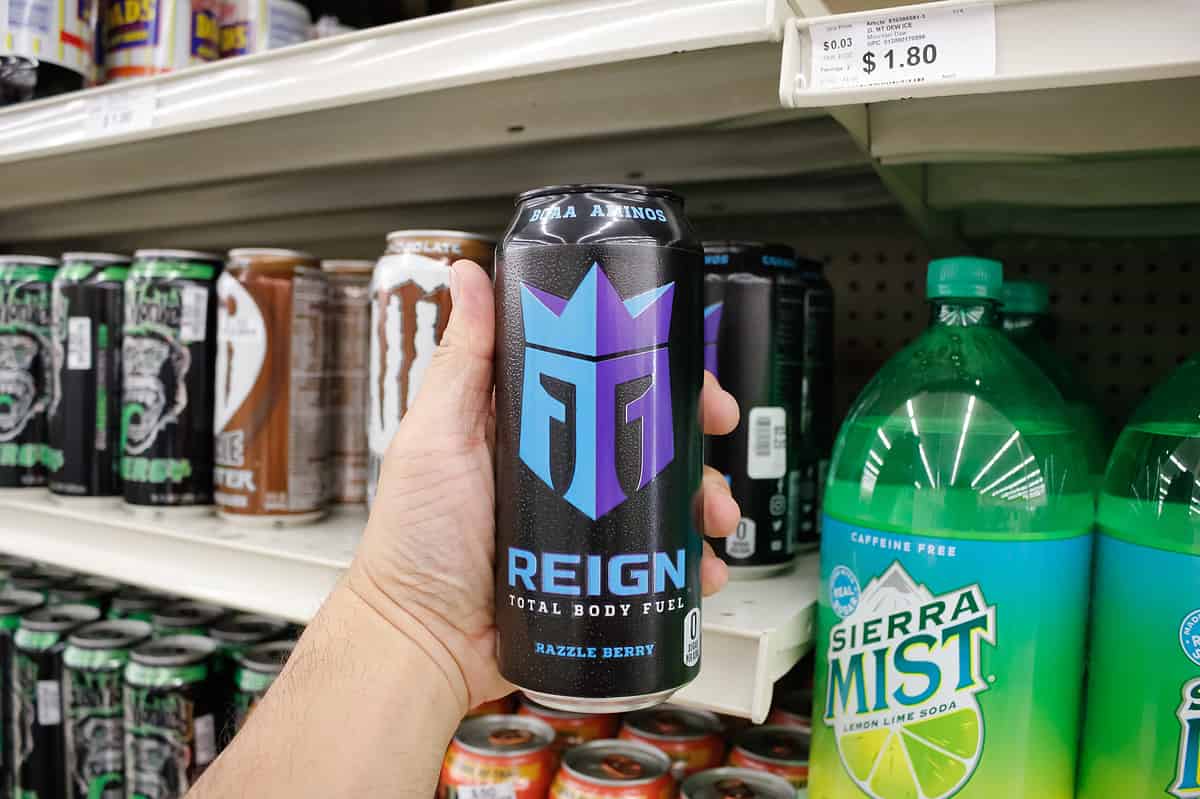
Reign Energy Drink on a store shelf
©The Image Party/Shutterstock.com
Next up, we have Reign Energy. Their drinks contain around 300 mg of caffeine. And, while it boasts “zero sugar” it does sweeten its drinks with Sucralose, which is an artificial sweetener. According to Health Digest, this zero-calorie sweetener is 6x sweeter than standard sugar, which means that it doesn't actually combat the negatives of added sugar at all. Also, consider that one Reign energy drink covers 3/4 of the daily recommended intake limit for caffeine.
3. Red Bull Energy
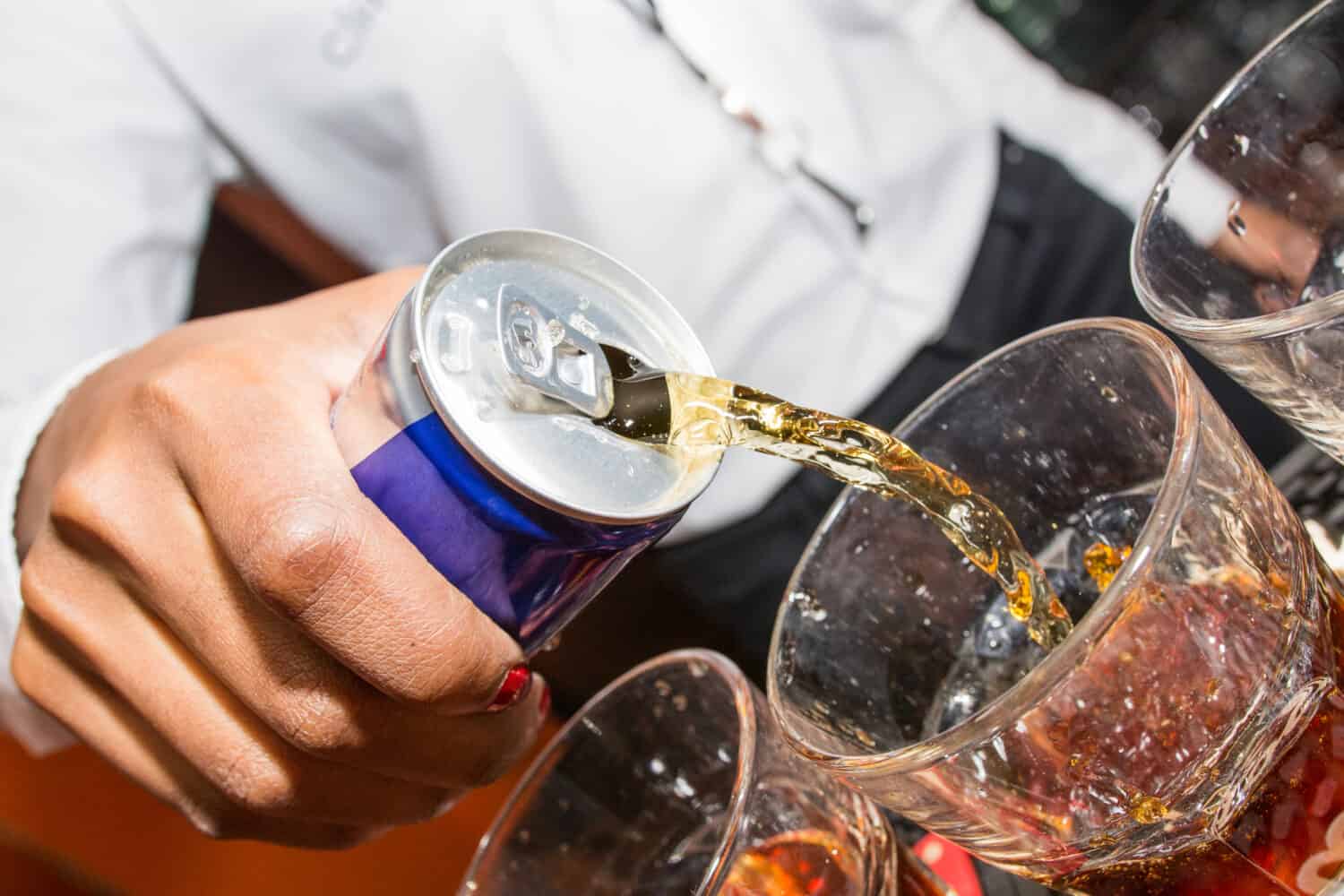
Red Bull remains a popular energy drink despite its questionable health profile.
©Ash Pollard/Shutterstock.com
Perhaps one of the most well-known energy drinks, Red Bull is also considered one of the most unhealthy energy drinks in America. It has 80 milligrams of caffeine in an 8.46-ounce can, which is nearly doubled in its 12-ounce can (via Caffeine Informer). There are 37 grams of sugar in the 12-ounce can, which is higher than the recommended daily intake in both male and female adults. And yet, Red Bull continues to increase its sales, proving it's still one of the most popular energy drinks despite its major caffeine and sugar content (via Statista).
4. Bang Energy
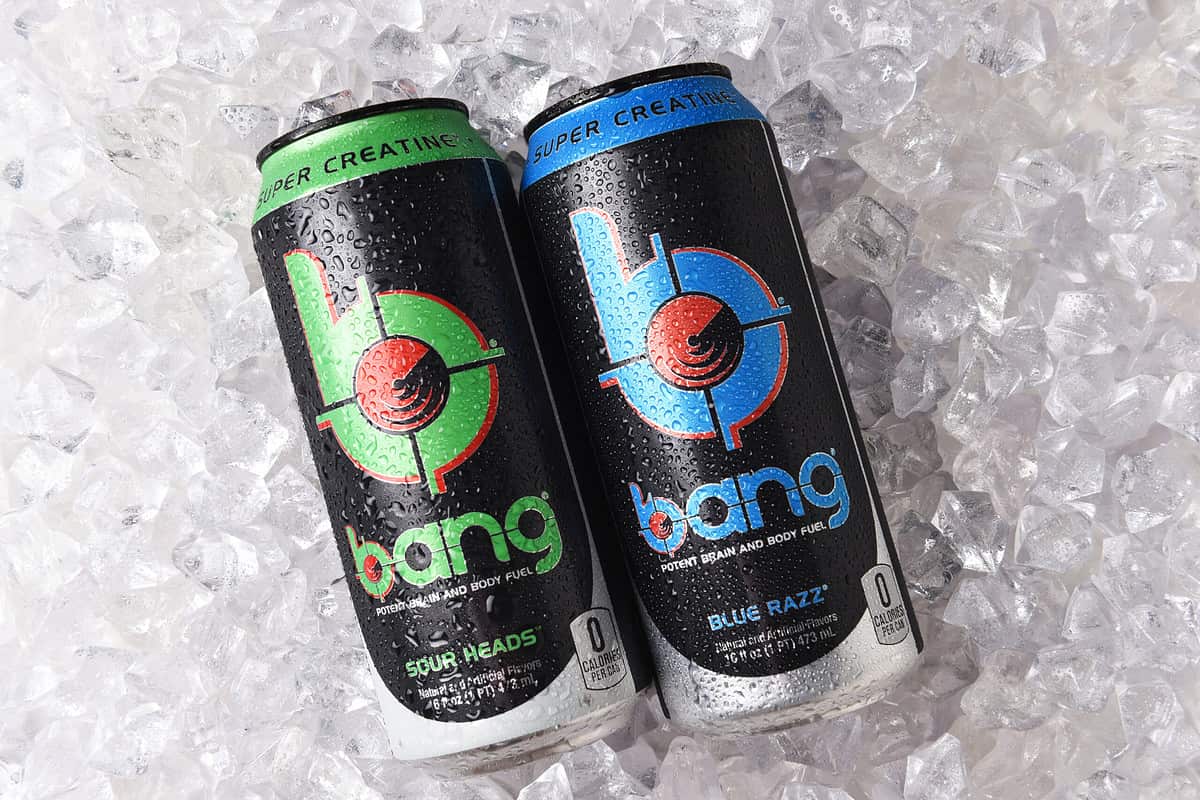
Bang Energy Drink cans on ice
©Steve Cukrov/Shutterstock.com
Next up we have Bang Energy. Bang Energy drinks contain 250 milligrams of caffeine in their 16-ounce can. Their website boasts no sugar, no artificial coloring, and that their caffeine comes from actual coffee beans. However, the amount of caffeine in these drinks is still over half the recommended daily limit (via Health Digest). So, while this may be one of the healthier items on this list of unhealthy energy drinks, there are still much better ways to get caffeine than from this energy drink.
5. Celsius Energy
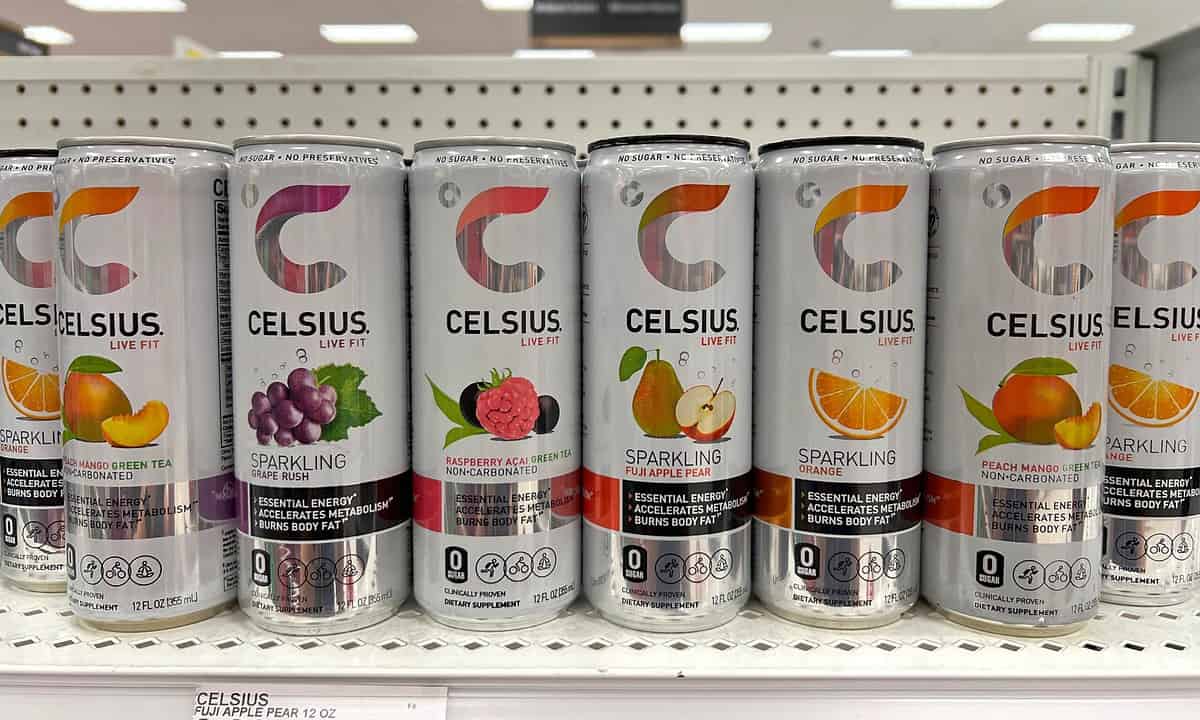
Celsius Energy Drinks on a store shelf
©Sheila Fitzgerald/Shutterstock.com
The Celsius energy drinks contain around 200 milligrams of caffeine in one 12-ounce can. However, some of their energy drinks can contain as much as 300 milligrams. It's not necessarily the sugar content in this drink, because Celsius actually has zero grams of sugar. Once again, it's the caffeine content to worry about. Before buying a Celsius drink, keep in mind that's nearly half the recommended caffeine limit and definitely not a good drink option for kids.
6. Rip It Energy
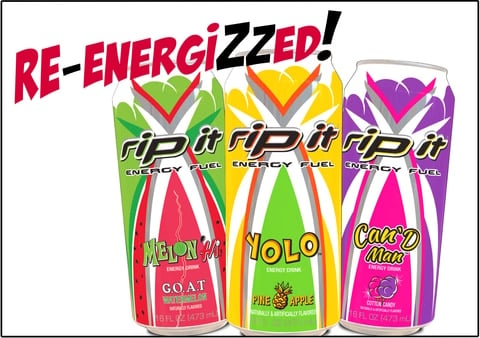
Rip It Energy Drink flavors released in 2022
©National Beverage Earnings Release – Original
Next up we have Rip It energy drinks with 10 mg of caffeine per 1 fluid ounce. That means their 160-ounce can contain 160 milligrams of caffeine (via Caffeine Informer). While it has zero sugar, this drink also utilizes Sucralose, which, as you may remember is 6x as sweet as most added sugars. So not only are you getting a high dose of caffeine, but also a lot of sweetness in just a 16-ounce can of Rup It energy drink.
7. Mountain Dew Rise Energy
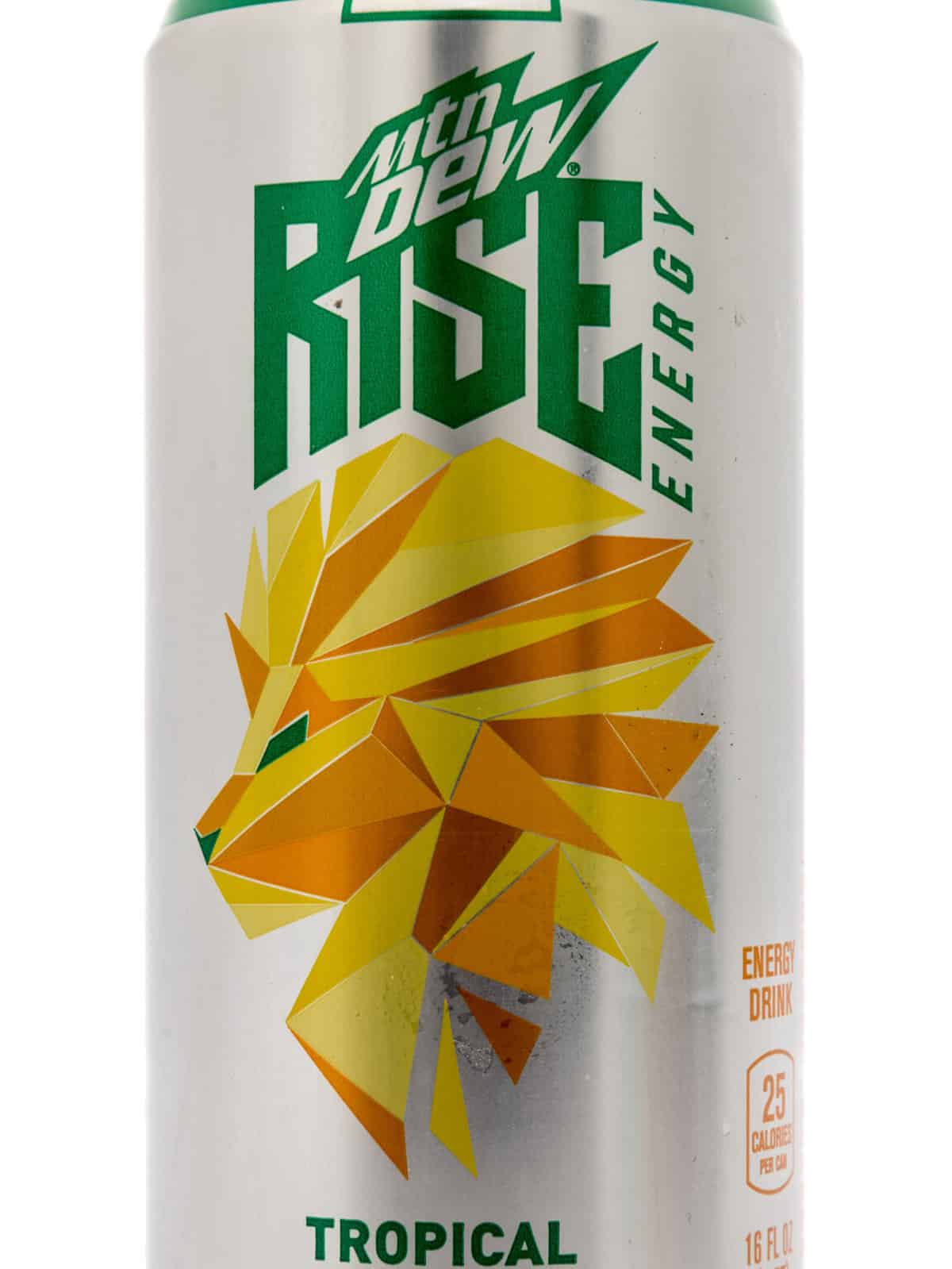
©Keith Homan/Shutterstock.com
A soft drink and an energy drink? That should raise some red flags. This Mountain Dew Rise energy drink is chock full of caffeine and sugar. There are 180 milligrams in a 16-ounce can, which is more than Rip It Energy has in their 16-ounce can! It is sweetened with artificial sweeteners like aspartame, and sucralose, which we know are necessarily better for you than regular sugar.
8. Monster Energy
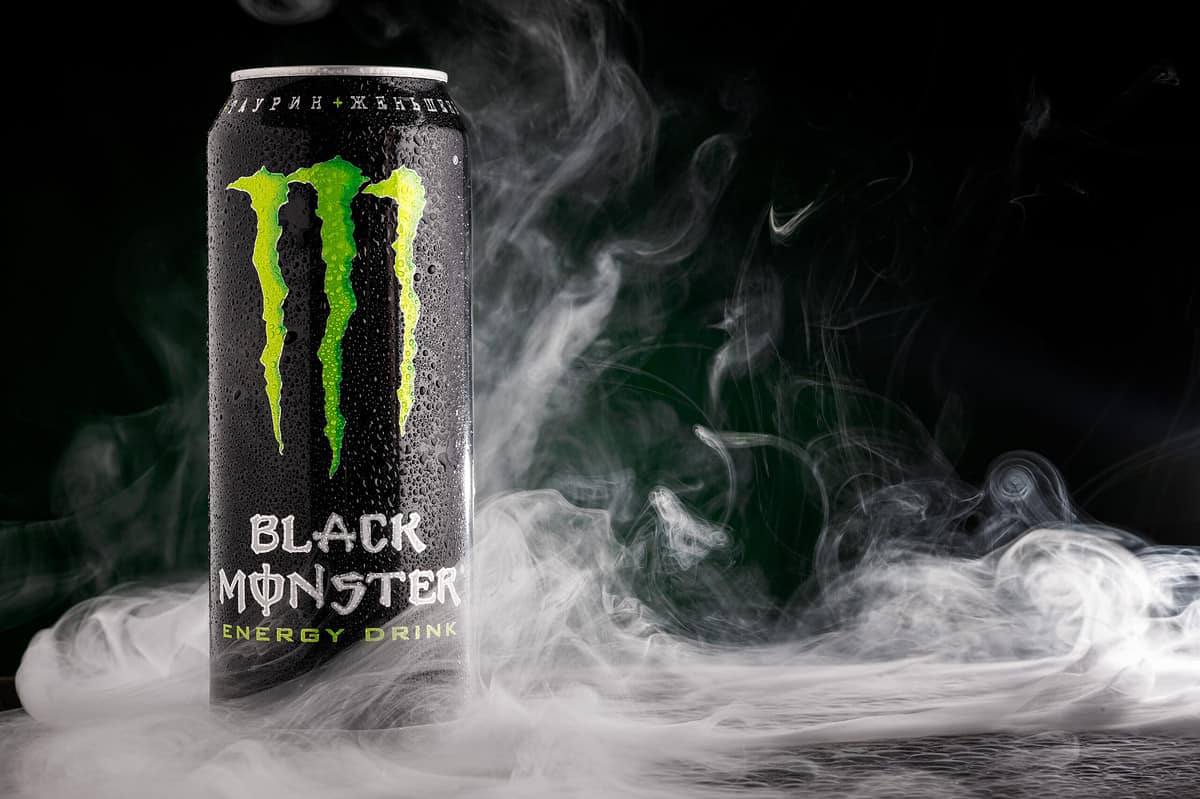
A can of Monster Energy Drink
©Bystrov/Shutterstock.com
And lastly, for this list anyway, we have Monster Energy, another popular brand. It has 160 milligrams of sugar and 27 grams of sugar per serving. This number may change depending on the size of the can and the particular flavoring, but the point is that Monster Energy drinks deliver a lot of caffeine, and just about the recommended amount of daily sugar intake. This means that with just one Monster energy drink, you should try and avoid anything else sugary.
Other Energy Drinks to Enjoy in Moderation
Rockstar Xdurance
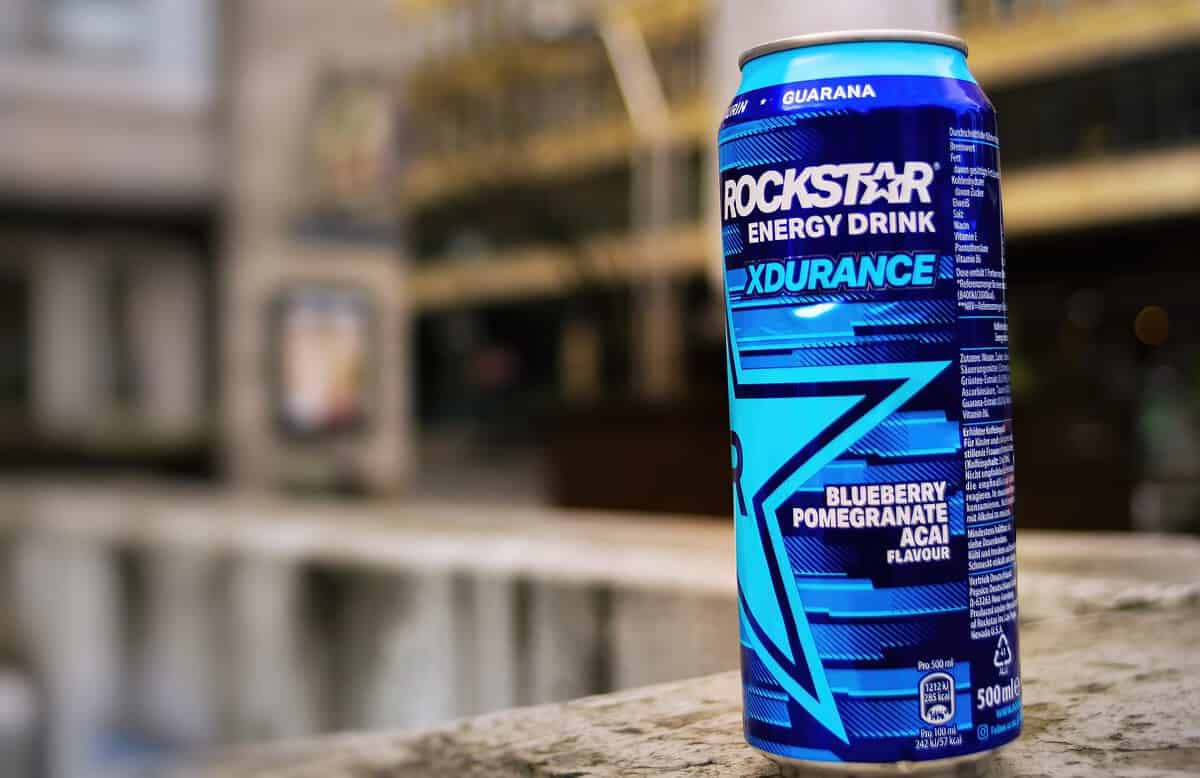
Rockstar Xdurance Blueberry Pomegranate Acai
©Wirestock Creators/Shutterstock.com
Spike Hardcore Energy
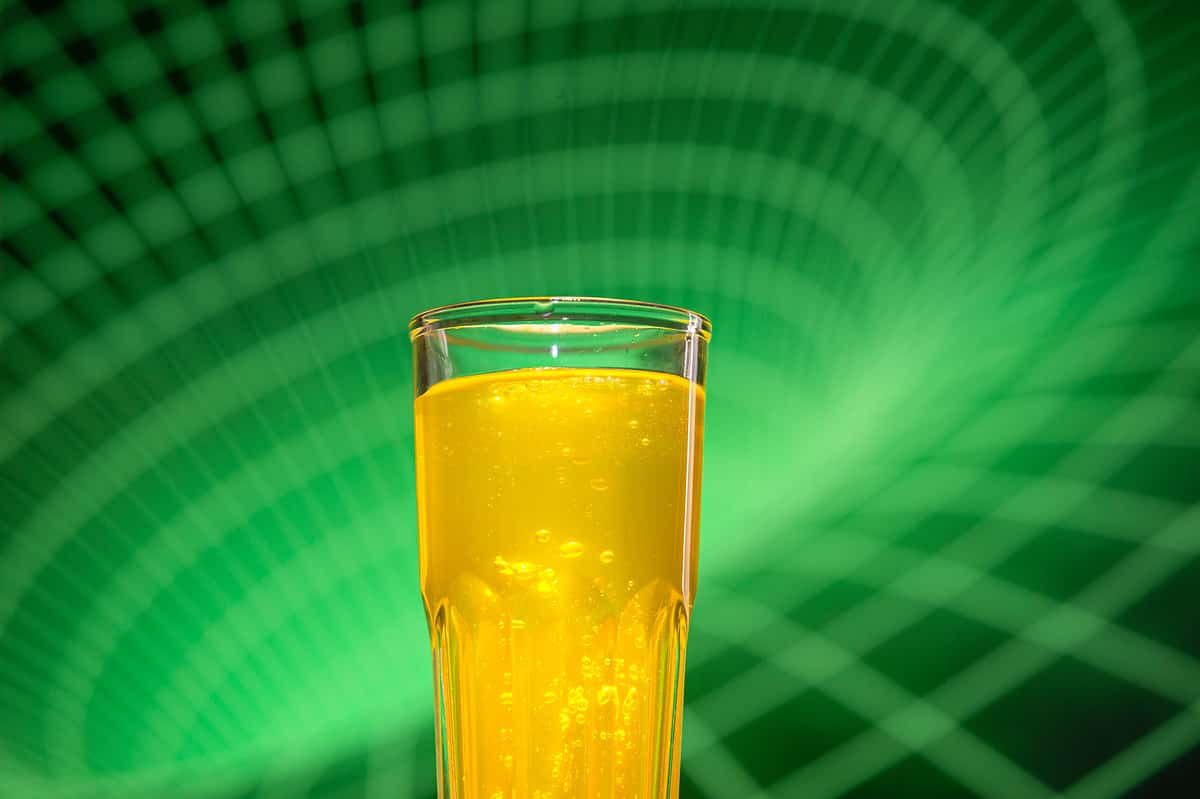
Energy drink caffeine levels are quite variable
©Viktor_LA/Shutterstock.com
Bucked Up
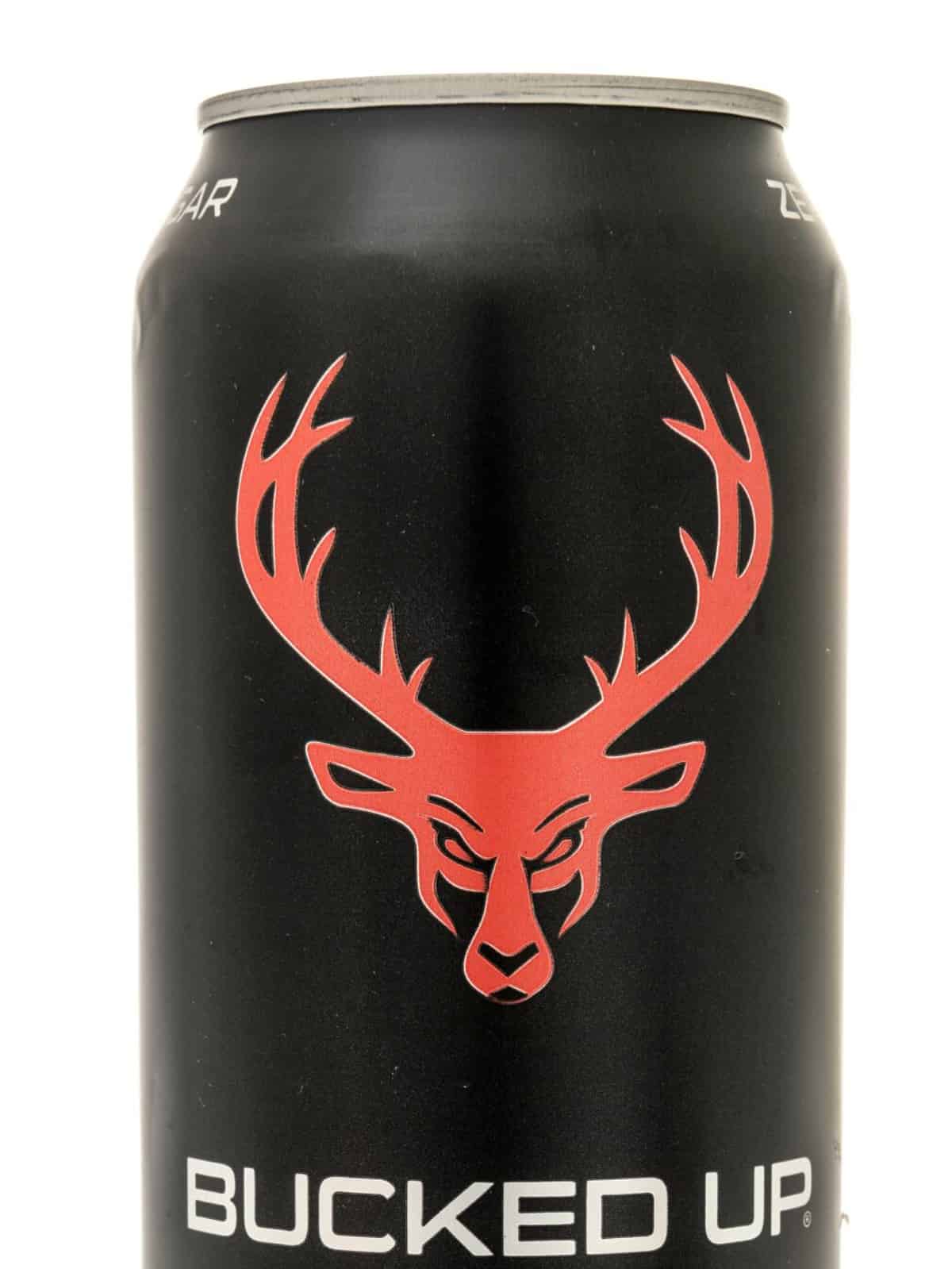
Bucked Up Blood Raz
©Keith Homan/Shutterstock.com
Spike Hardcore Energy
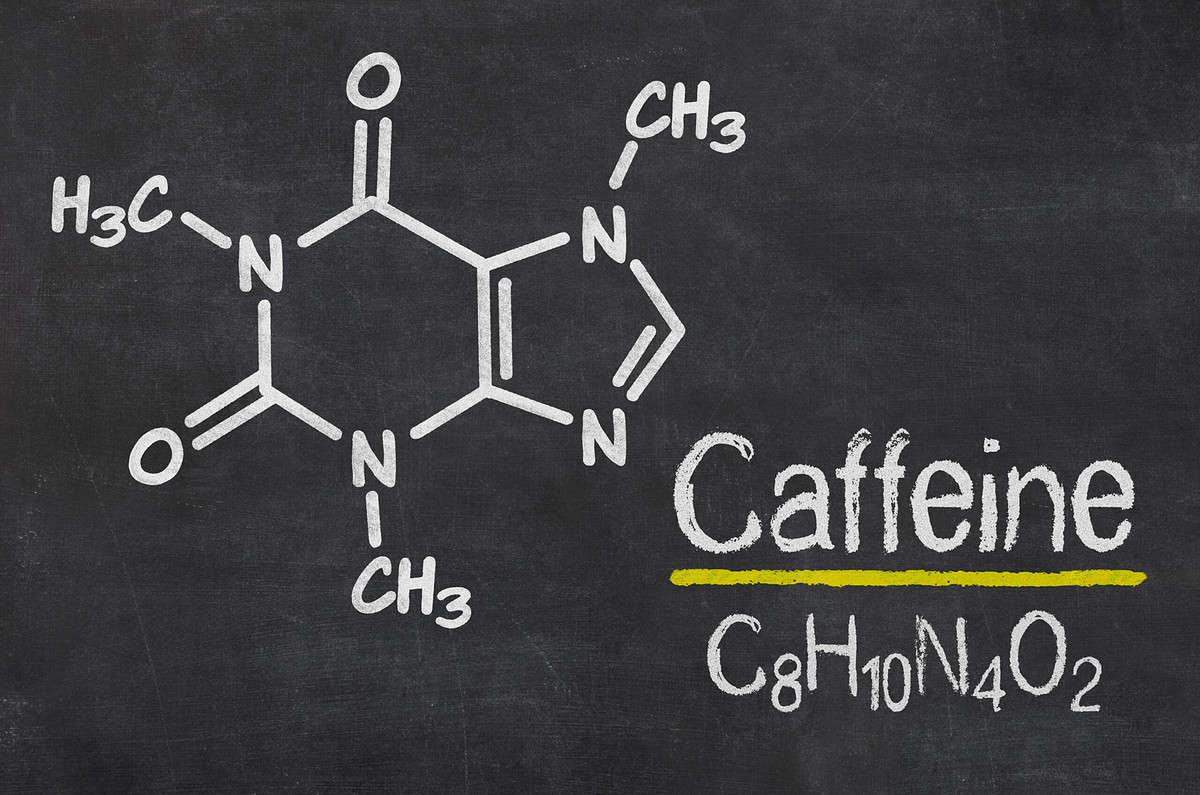
Blackboard with the chemical formula of caffeine
©Zerbor/Shutterstock.com
C4 Ultimate Energy
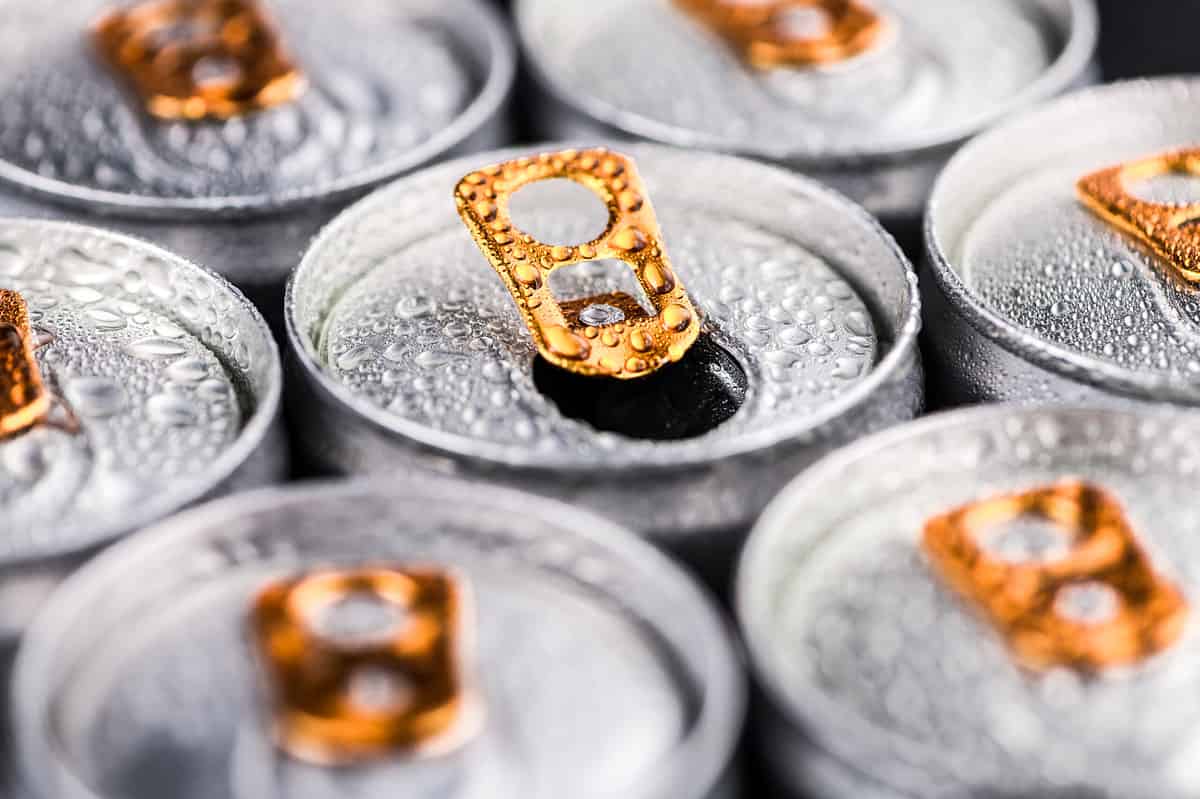
Energy drinks in focus
©HandmadePictures/Shutterstock.com
The History Of Energy Drinks
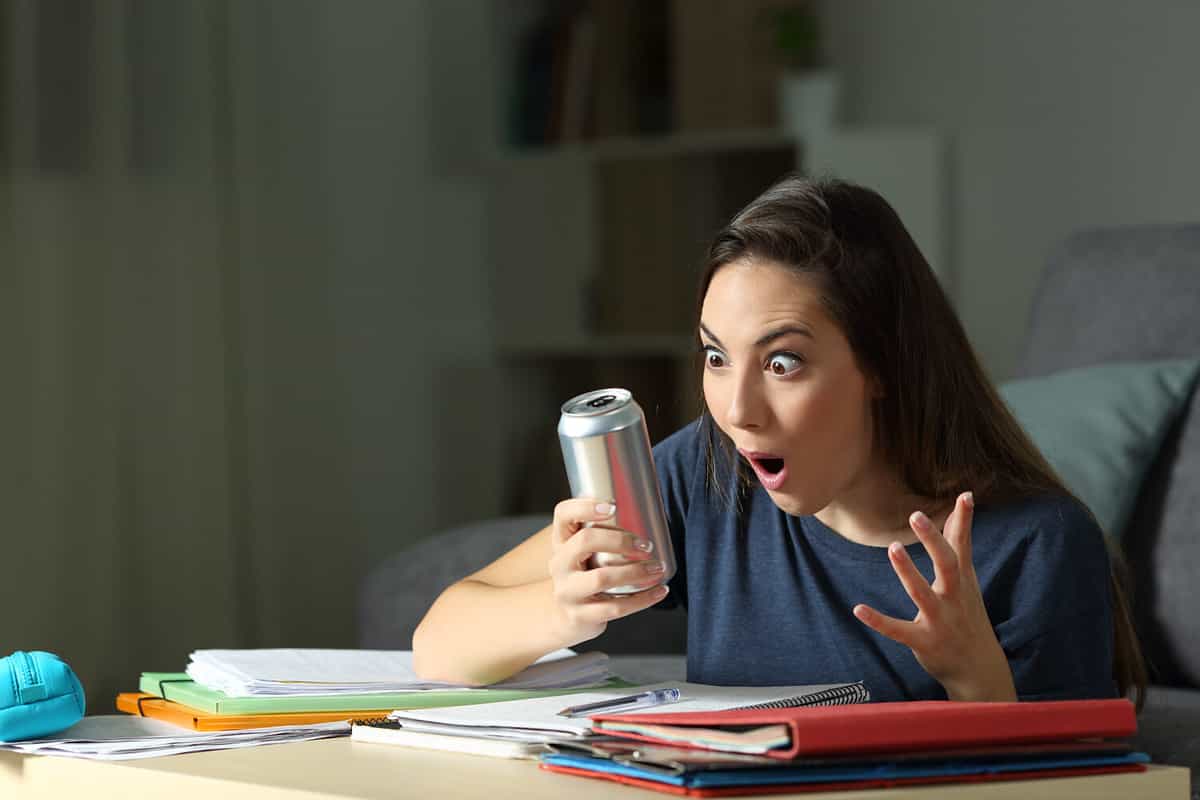
©Antonio Guillem/Shutterstock.com
Energy drinks and amphetamine usage originally went hand in hand. The original inventor of Coca-Cola, John Pemberton, combined coca leaf extract (cocaine) with caffeinated kola nuts. It was intended as a nausea and heartburn relief tonic but actually resulted in an energy boost from the coca leaf extract. By the 1930s, the cocaine in these drinks was outlawed, meaning “energy drinks” needed to find a new direction. In Japan, energy drinks were heavily utilized in the workforce by high-level executives to stay awake and get ahead.
Liptovan D tonics were introduced in the 1960s by a company called Taisho. Its main ingredient, taurine is a type of amino acid that is also used in modern-day Red Bull. Red Bull was first invented in Thailand circa 1976 and marketed worldwide by the 1980s. In the world market, more sugar, and more caffeine were added to Red Bull, which made other sugary drink companies more inclined to up the ante. Energy drinks boomed in the U.S. throughout the 2000s, with Rockstar established in 2001, Monster in 2004, Rip in 2004, and the list goes on (via Thrillist).
Healthier Options to Choose From
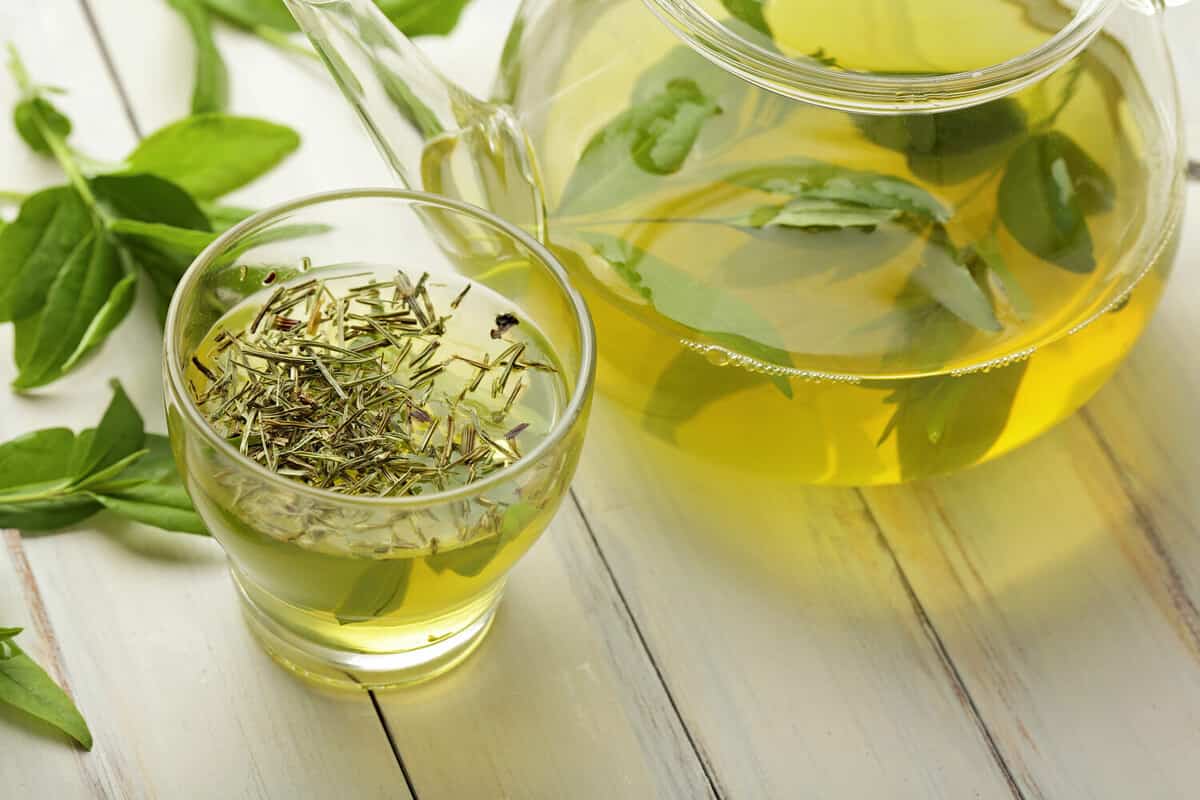
Green tea is full of natural caffeine, and a great alternative to energy drinks.
©KMNPhoto/Shutterstock.com
Some of the healthier “energy drink” alternatives to choose from have more moderate levels of caffeine, sugar, and other healthy ingredients. You can get caffeine from coffee, yerba maté, and black tea directly, instead of going for something sugary. But, if you must have your fix, try these instead. Bai beverages have a low sugar content and a reasonable caffeine fix. MatchaBar Hustle has 80 milligrams of caffeine and no unhealthy additives. Nuun energy capsules also have 80 milligrams of caffeine, but dissolve in water, and are derived from Green tea. All this to say, there are ways to get your caffeine from healthier options than any of the energy drinks on this list.
The image featured at the top of this post is ©Holiday.Photo.Top/Shutterstock.com
